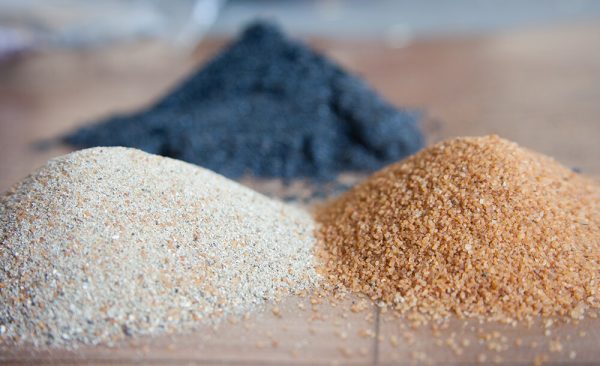
Quartz sand, also known as silica sand, is a silica material processed from natural crystals and quartz minerals or chemically synthesized. Quartz products have the characteristics of high hardness and low expansion coefficient. They perform well in terms of high temperature resistance, corrosion resistance, light transmittance, chemical stability, and electrical insulation. They are widely used in casting, building materials, optical fibers, photovoltaics, semiconductors, etc. field. The applications of quartz sand in the photovoltaic field mainly include: photovoltaic glass, quartz furnace tube brackets and other structural parts, and quartz crucibles.
The performance of quartz sand can be significantly improved with the increase of purity. Therefore, purity is the main parameter to distinguish the quality of quartz sand and the main basis for determining the use of quartz sand. According to the purity, it can be roughly divided into silica (SiO2 content below 98.5%), ordinary quartz sand, refined quartz sand and high-purity quartz sand. Quartz sand of different purity has different performance, so the application scenarios are also clearly distinguished, ranging from basic building materials to precision instrument manufacturing. In addition, hardness, particle size, color, etc. are also important parameters of quartz sand.
Photovoltaic cell modules work in the open air all year round. In order to cope with harsh climate challenges such as water vapor corrosion and oxidation, and changes in temperature between day and night, the cells are sealed between the panel and the backsheet with an adhesive film. Photovoltaic glass used as packaging panels or backsheets has high hardness and light transmittance after being tempered and coated. It can protect cells and ensure light transmission. It is an important auxiliary material in the packaging process of photovoltaic modules.
The strength and light transmittance of photovoltaic glass will directly determine the service life and power generation efficiency of the components, so the requirements for light transmittance, absorptivity, reflectivity, impact resistance, and corrosion resistance are relatively high. According to relevant standards, the transmittance of photovoltaic glass should be ≥ 91.5% (3.2mm photovoltaic glass), which is significantly higher than ordinary glass (about 88~89%). The iron content is a key factor in determining the light transmittance of glass: ordinary glass often appears green and has low light transmittance due to its high iron content; while photovoltaic glass is characterized by high light transmittance and high transparency, and the iron content Strict requirements. According to relevant standards, the ferric oxide content of low-iron quartz sand for photovoltaic glass is required to be no higher than 60ug/g.
High-purity quartz sand has three major process routes: natural crystal processing, quartzite mineral purification and chemical technology synthesis. Among them, the natural crystal processing technology is relatively simple and was the main early manufacturing method of high-purity quartz sand. However, due to the high price of raw materials and limited reserves, industrial mass production cannot be achieved; while the chemical synthesis method is costly, but does not rely on quartz mineral resources. It may be the future development direction of the quartz sand industry; since the 1970s, the mineral purification process has gradually matured and is now the mainstream preparation technology.
The mineral purification method has very high requirements on the purification process and raw ore quality. On the one hand, high-quality quartz ore required for high-purity quartz sand is relatively scarce. The existence form and content of impurities in quartz ore determine the later purification process, and also indirectly determine the upper limit of the purity of quartz sand. It is generally believed that high-purity quartz ore that can be processed and purified to quartz sand above 3N grade needs to reach a SiO2 purity of 98.8%. As of 2019, the number of high-purity quartz ores identified worldwide is about 72.87 million tons, mainly distributed in Brazil, In North America and other places, the Spruce Pine white granite quartz mine in the United States has become a major producer of high-end quartz sand due to its large ore body size, low fluid impurities, and stable quality. my country’s resource reserves are approximately 6.85 million tons, accounting for only 9.4%. They are all small and medium-sized mining areas, and high-quality ore resources are relatively scarce.
On the other hand, the purification process of high-purity quartz sand is complex and has high technical barriers. In the preparation process of high-purity quartz sand, companies need to design the purification process based on the grade of raw ore, impurity components, application characteristics, etc. For example, alkali metals such as Na, K, and Li are closely related to the thermal stability of quartz products, while Cr, Cu, Fe, etc. Transition metal elements will significantly affect the conductivity of quartz products.
